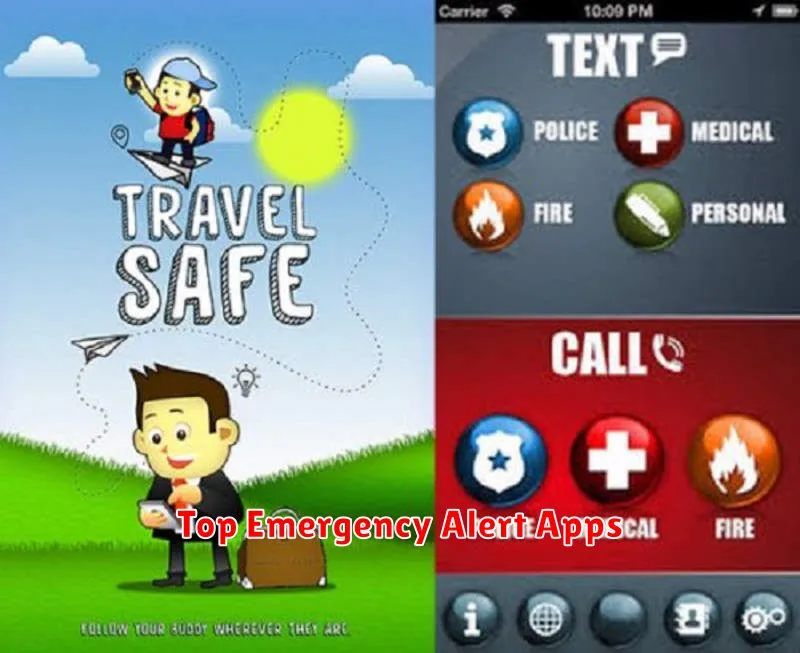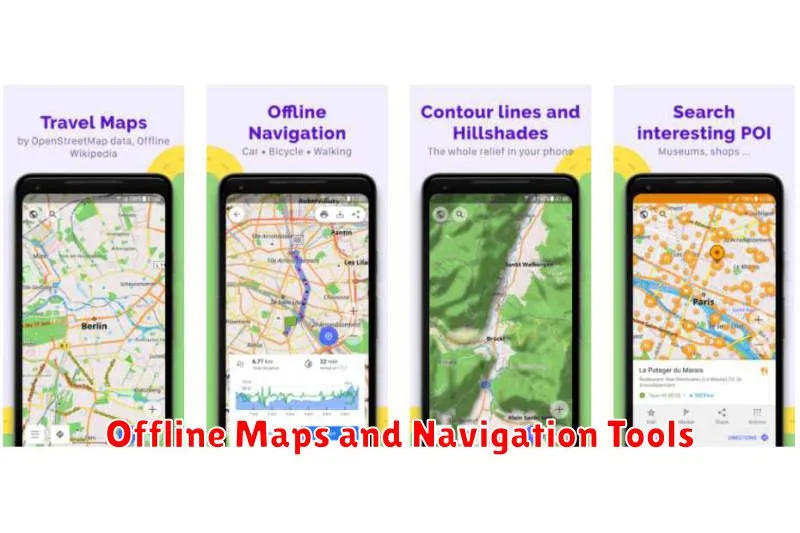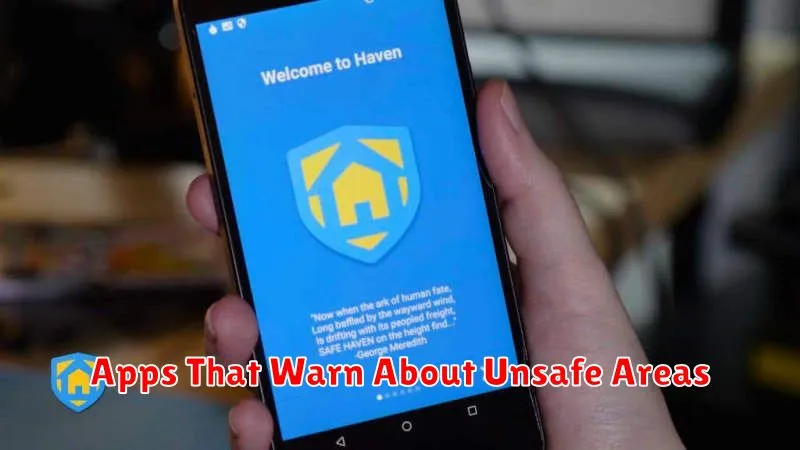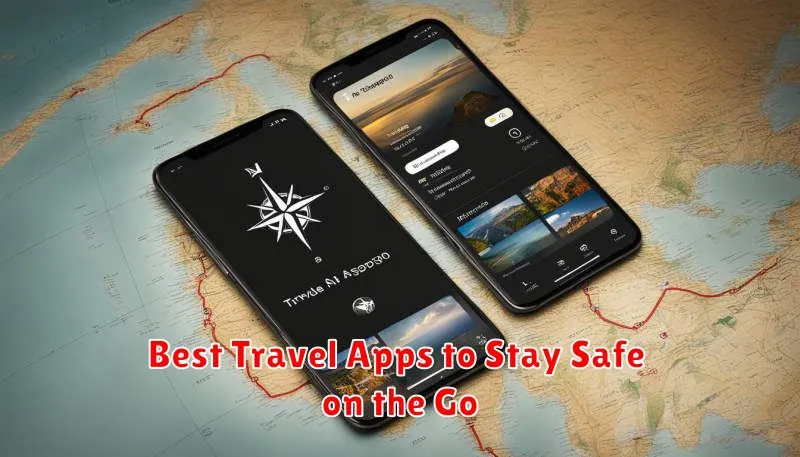Staying safe while traveling is paramount. Whether you’re embarking on a solo backpacking trip across Southeast Asia, a family vacation in Europe, or a business trip in a new city, prioritizing safety is key to a smooth and enjoyable experience. In today’s digital age, numerous travel apps are designed specifically to enhance your safety on the go, providing invaluable resources and tools at your fingertips. This article explores the best travel apps to stay safe, offering insights into their features and benefits so you can choose the right ones for your next adventure.
From real-time location sharing with loved ones to emergency alerts and offline access to vital information, the right travel safety apps can be a game-changer. Finding your way around unfamiliar territories, accessing local emergency services, translating essential phrases, and staying informed about potential safety risks are all made significantly easier with these powerful tools. Explore our curated selection of the best travel apps to stay safe, ensuring your peace of mind and enhancing your overall travel experience.
Why Safety Apps Are a Travel Essential
In today’s interconnected world, travel has become more accessible than ever. However, along with the excitement of exploring new destinations comes the responsibility of ensuring personal safety. Safety apps have emerged as invaluable tools for travelers, offering a range of features designed to enhance security and provide peace of mind.
Real-time location sharing allows family and friends to track your whereabouts, providing an added layer of security in unfamiliar environments. Many apps also include check-in features, enabling you to quickly and easily notify loved ones of your safe arrival.
Safety apps can also provide immediate access to emergency services. With a single tap, you can connect with local authorities, such as police, fire departments, or ambulances, regardless of language barriers or unfamiliarity with local emergency numbers.
Some apps offer up-to-date safety information, including travel advisories, local alerts, and even real-time crime reports. This information empowers travelers to make informed decisions about their itinerary and avoid potentially dangerous situations.
While enjoying the freedom of travel, remember that proactive safety measures are crucial. Integrating safety apps into your travel planning can significantly contribute to a more secure and enjoyable experience.
Top Emergency Alert Apps

Staying informed about potential hazards is crucial for safe travels. Emergency alert apps provide real-time notifications about severe weather, natural disasters, and other critical events. These apps utilize your device’s location to deliver relevant alerts, helping you stay ahead of danger.
Several popular apps offer valuable safety features. Some provide alerts based on your saved locations, allowing you to monitor conditions at home or your destination. Others offer customizable alerts, enabling you to specify the types of events you want to be notified about. Features like safety check-ins and location sharing with designated contacts can also contribute to your peace of mind.
When choosing an emergency alert app, consider factors like the range of alerts offered, the reliability of the information, and the app’s user interface. Look for apps with clear, concise alerts and easy navigation to ensure you can quickly understand and react to critical information.
Offline Maps and Navigation Tools

Staying connected while traveling isn’t always guaranteed. Offline maps and navigation tools are crucial for navigating unfamiliar territories without relying on an internet connection. Downloading maps before your trip allows you to access directions, find points of interest, and estimate travel times even in areas with limited or no connectivity.
Several apps offer robust offline functionalities. Look for features like turn-by-turn navigation, searchable points of interest (POIs) such as restaurants and gas stations, and the ability to download detailed maps of specific regions or entire countries. Some apps also offer offline public transit information which can be invaluable in navigating foreign cities.
Having readily available offline maps provides peace of mind, especially when exploring remote areas or when cellular data is unreliable or expensive. It ensures that you can always find your way, regardless of connectivity issues, contributing to a safer and less stressful travel experience. Remember to download the necessary maps before embarking on your journey.
Language Translator and SOS Tools
Communication barriers can pose significant safety risks while traveling. Translation apps can bridge this gap, allowing you to converse with locals, understand signage, and navigate unfamiliar environments. Features like offline translation are particularly useful in areas with limited internet connectivity.
In emergencies, having quick access to help is crucial. SOS apps can connect you with local emergency services, provide your GPS location, and even notify pre-selected contacts. Some apps also offer features like safety check-ins and travel advisories, enhancing your overall security.
When selecting these tools, consider factors like supported languages, offline functionality, and the reliability of the emergency services integration. Prioritize apps with a proven track record and positive user reviews.
Apps That Warn About Unsafe Areas

Staying informed about your surroundings is crucial for safe travels. Several apps specialize in providing real-time safety information and alerts about potentially dangerous areas. These apps can be invaluable tools for navigating unfamiliar cities and making informed decisions about your routes and activities.
Some apps use crowd-sourced data, where users report incidents and unsafe locations. This information is then aggregated and displayed on a map, allowing you to see potential hazards in your vicinity. Look for apps that offer features like real-time alerts for incidents happening near you, and the ability to customize the types of alerts you receive, such as alerts for thefts, assaults, or other specific safety concerns.
Other apps leverage official crime statistics and data from local law enforcement agencies. These can offer a broader perspective on neighborhood safety trends. While these sources may not be as up-to-the-minute as crowd-sourced information, they can still be valuable for understanding the overall safety profile of an area. Consider apps that provide safety scores or risk ratings for different neighborhoods.
Remember to use these apps as one piece of a broader safety strategy. Always exercise caution and good judgment, regardless of what an app might indicate about an area’s safety. Be aware of your surroundings, trust your instincts, and if a situation feels unsafe, remove yourself from it.
VPN Apps for Secure Browsing
When traveling, using public Wi-Fi networks is often a necessity, but these networks can be insecure. A Virtual Private Network (VPN) creates a secure, encrypted connection over a public network, protecting your data from potential threats like hackers and identity theft. This is particularly important when accessing sensitive information like online banking or making online purchases.
VPNs mask your IP address, making it appear as though you are browsing from a different location. This can be useful for bypassing geo-restrictions on certain websites or streaming services. However, it’s crucial to choose a reputable VPN provider that prioritizes security and privacy. Look for features like a no-logs policy, strong encryption, and a kill switch, which cuts off your internet connection if the VPN drops.
Some popular and well-regarded VPN options include NordVPN, ExpressVPN, and ProtonVPN. Research different providers and compare their features, pricing, and user reviews to find the best fit for your needs. Using a VPN is a simple yet effective way to enhance your online security while traveling.
Organizing Important Documents Digitally
When traveling, carrying physical copies of important documents can be risky. Losing your passport or visa could derail your trip. Digitizing these documents provides a secure backup and convenient access.
Before your trip, scan or photograph your passport, visa, driver’s license, and other essential identification documents. Store these securely in a password-protected cloud service or a secure folder on your device.
Consider using a dedicated travel app with document storage features. These apps often provide additional security measures, such as encryption and multi-factor authentication.
Organize your digital documents clearly. Create separate folders for each type of document, and ensure file names are descriptive and easy to search. This allows quick access when needed.
While digital copies are valuable, it’s still wise to carry physical backups of crucial documents, stored separately from the originals, in case of device failure or loss.

